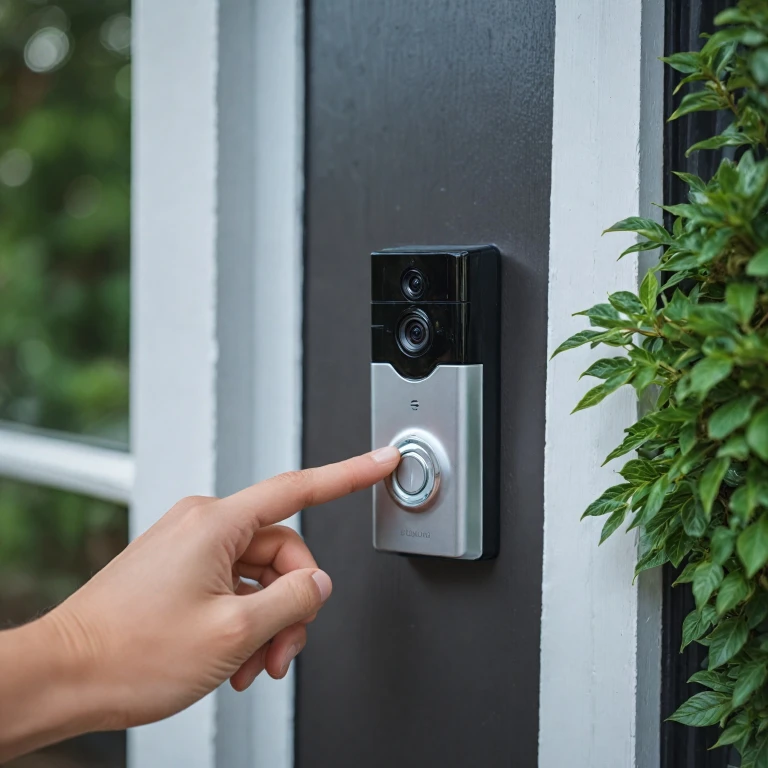Understanding the Importance of WiFi for Your Ring Doorbell
Why WiFi is Crucial for Your Ring Doorbell
Understanding the role of WiFi in your Ring doorbell setup is essential for ensuring optimal functionality and performance. Your Ring device relies heavily on a stable WiFi connection to operate effectively. Here's a breakdown of why it's so important:- Video Streaming: The video doorbell uses WiFi to connect to the internet, enabling live video streaming to your smartphone via the Ring app. This is vital for real-time monitoring and communication with visitors.
- Notifications: When someone rings your doorbell or motion is detected, the device sends an alert to your Ring app. A reliable WiFi network ensures these notifications are timely and consistent.
- Device Health: A stable connection impacts the overall health of your ring device. Frequent disconnects or connection issues can lead to poor performance or missed alerts.
- Feature Integration: Many advanced features, including video recording and cloud storage, depend on a steady internet service. Changing or upgrading your WiFi can sometimes remedy issues or improve these functionalities.
Preparing to Change Your WiFi Settings
Get Ready to Change Your Wifi Settings
Changing your Ring doorbell's wifi settings can significantly improve device performance and ensure your video feed won't experience interruptions. Before jumping into the actual setup process, it's crucial to properly prepare. Here's what you need to know and do:- Gather Necessary Information: Have your new wifi network's name (SSID) and password ready. Ensure that your new network is either 2.4GHz or 5GHz, as these are generally compatible with most Ring devices.
- Ensure Stable Internet Service: Check that your internet service is active and the wifi network is functioning well before attempting any changes. A stable connection will make the process seamless.
- Verify Device Health: Before making any changes, open the Ring app to inspect the device health. Look for things like signal strength, which should be strong enough for the doorbell to connect smoothly to the new network.
- Locate Your Router: If possible, keep the router and the Ring video doorbell in close proximity during the setup process. This helps in establishing a strong connection once the network change is initiated.
- Have Your Ring App Updated: Make sure the Ring app is updated to the latest version. This often contains bug fixes and may include new settings that ease change processes.
- Silence Other Devices: Temporarily disconnect or reduce the usage of other devices on the network. This free up bandwidth and helps prevent potential connectivity issues when linking the doorbell to a new wifi network.
Step-by-Step Guide to Changing WiFi on Your Ring Doorbell
Initiating the WiFi Change on Your Ring Doorbell
Start by ensuring your Ring device is receiving adequate signal strength. First, open the Ring app on your smartphone or tablet. From the app's dashboard, locate your Ring doorbell and tap on its icon to enter the settings menu to begin the WiFi change process.
Selecting Your New WiFi Network
Under the 'Device Settings', select 'Network' and then 'Change Wifi Network'. The app will prompt you to initiate the setup mode on your video doorbell by pressing the device's button indicated in the instructions. Once this is done, your device will search for available networks.
Connecting to a New Network
View the list of networks and select the new wifi network you want to connect to. Remember that your wifi router may support different GHz networks. If you have both a 2.4 GHz and 5 GHz option, it's essential to choose the one that best suits your internet needs. Enter the new WiFi password and wait for confirmation that the connection is successful before proceeding.
Finalizing the Setup
Recheck your connection by testing the Ring video. If your device won connect, verify if the password is correct and signal strength is adequate. For advanced insights into your device's health and further device network settings, consult Ring's customer support or their comprehensive online resources.
Troubleshooting Common WiFi Connection Issues
Identifying Connection Challenges
The process of changing your Ring doorbell's WiFi settings can sometimes lead to connection issues. Here are some common problems users may encounter and tips on how to address them:- Doorbell Won't Connect: If your device isn't connecting, ensure that you've entered the correct WiFi password. Double-check the password for your WiFi network in your router settings.
- Device Off-Peak Hours: Sometimes, high network traffic can impede connectivity. Consider attempting to change the network during non-peak internet usage hours to reduce the load on your network.
- Signal Strength: A weak signal may result in the inability to connect. Check the signal strength of your WiFi network in the Ring app's 'Device Health' section. If necessary, reposition your router or consider a WiFi extender to boost the signal.
Resolving Network Configuration Issues
Adjusting configurations or settings might be necessary in order to establish a smooth connection for your Ring video doorbell:- Compatibility with GHz Networks: Ensure your Ring device is compatible with the network band (either 2.4GHz or 5GHz) you are trying to connect to. If the device won’t connect, try switching between these frequencies.
- Network Isolation: Some routers have settings that can unintentionally isolate your doorbell from the rest of your devices. Disable any 'AP isolation' or settings that separate your devices in the router setup.
- Device Network Reset: As a last resort, resetting the network settings on your device and rebooting both the doorbell and the WiFi router can often resolve persistent connection issues.
Tips for Consistent WiFi Performance
Once you've successfully changed the network details on your device, you want to ensure consistent performance for seamless video streaming and alerts:- Router Placement: Position your router in a central location, ideally high up, to maximize signal distribution throughout your home.
- Internet Service Provider (ISP) Support: If continuous issues arise, contact your ISP to ensure there are no service disruptions or to check if your plan meets the bandwidth needs of your devices.
- Monitor Device Health: Regularly use the Ring app to check on your device health. This can alert you to any ongoing issues with WiFi connectivity or power supply that may affect performance.
Ensuring Optimal Performance Post WiFi Change
Maximizing Efficiency for Your Ring Video Doorbell
Once you've successfully changed the WiFi settings on your Ring device, keeping your doorbell operating optimally is essential to capitalize on the change and ensure a strong connection. Here are key steps to consider:
- Adjust the Router Placement: If your Ring doorbell has difficulty maintaining a connection, consider repositioning your router. A more centralized location can enhance signal strength, reducing the chance of the device won’t connect to the network.
- Update Device Settings: After connecting to the new WiFi, ensure you update your network preferences within the Ring app. This setup ensures your device is synced with the router’s specifications and any changes in internet service.
- Check for Firmware Updates: Regularly checking the Ring app for firmware updates can drastically improve the device’s performance and its ability to maintain a stable connection.
- Utilize a WiFi Extender: If your router's reach is limited, adding a WiFi extender can help improve your Ring doorbell’s signal. This is particularly useful if the Video Doorbell is installed far from your main network router.
- Regularly Monitor Signal Strength: Frequently checking signal strength through the Device Health section of the Ring app is recommended. A strong, consistent signal ensures optimal function and quality video streaming.
By following these steps, you can ensure your Ring Video Doorbell functions smoothly after any network change. A stable connection is pivotal for the doorbell to offer seamless video and communication capabilities with your other connected devices.
Exploring Advanced Features and Security Settings
Unlocking Advanced Features & Strengthening Security
Once you've successfully changed your WiFi settings on your Ring doorbell, it’s a great time to explore the advanced features that come with your Ring device, ensuring that you are making the most of it. The Ring app is full of options that can enhance both functionality and security of your video doorbell.
Delve into Device Settings
Use the Ring app to customize device settings. Here you can adjust motion detection, video quality, and notifications to ensure your device is working effectively over your new network. With a stable connection, you can also explore setting up a Ring Chime to amplify alerts in your home, especially if the router is located further from your device.
Optimize Security Measures
Security should be a priority when managing any smart home device. Ensure your WiFi network is secure; change your default password, use a strong encryption method, and set up guest networks if needed. Check your device health in the Ring app regularly to monitor signal strength and ensure your doorbell won’t face connectivity issues.
Leverage Dual Band Connectivity
If you have a dual-band router, consider which network - the 2.4 GHz or the 5 GHz - your device should connect to. While 5 GHz offers faster speeds, 2.4 GHz networks often provide better range, which might be beneficial if your doorbell is far from your router.
Integrate with Other Devices
If connectivity issues arise, sometimes adding a WiFi extender can boost the signal strength to your Ring video doorbell. Additionally, integrating the doorbell with other smart home devices can open up new automation possibilities, enhancing your smart home setup.





